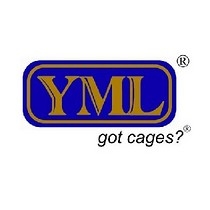Everything You Need to Know About Dog Arthritis


People and dogs both age and get arthritis. As canine lifespans rise, few senior canines will avoid it. Mild arthritis causes stiffness, pain, and activity intolerance.
Severe instances can affect a dog’s health, cause persistent suffering, and lead to euthanasia. There are ways to treat arthritis and let pets enjoy their golden years.
Arthritis
Arthritis causes joint inflammation, stiffness, and discomfort. Humans have osteoarthritis and rheumatoid arthritis. Osteoarthritis is caused by joint wear and strain and affects elderly persons or those with joint injuries. Rheumatoid arthritis is an autoimmune disease that may affect anyone.
Osteoarthritis is common in dogs. Dogs don’t have Rheumatoid arthritis, but they can get immune-mediated polyarthritis, which is similar and caused by the immune system attacking the dog’s body. It’s often a sign of an infection or underlying disease like cancer, not an ailment in itself. Immune-mediated polyarthritis causes lameness, stiffness, fever, drowsiness, diarrhea, and vomiting.
Immune-mediated polyarthritis has a distinct root cause than osteoarthritis and requires veterinarian diagnosis and therapy.
1 in 5 dogs will get osteoarthritis. The joint swells uncomfortably. A healthy joint’s bones should connect smoothly. This allows bones to move freely. Cartilage allows joints to move freely and painlessly. This crucial bodily component regenerates slowly, so it can wear away, causing bone ends to rub. Arthritis inflammation and discomfort result.
If the joint isn’t treated, the body grows new bone to compensate. This causes joint bones to thicken and stiffen, and extra bone may create painful’spurs’ A dog may refuse to utilize a painful limb.
Arthritis Causes?
While wear and tear can cause osteoarthritis, most dogs with the ailment have had an accident that destroyed a bone or have an underlying joint problem.
Accidents that break bones or damage joints can cause arthritis in dogs, especially if surgery is needed to fuse bones or repair joints. Accident-prone dogs should take joint supplements to prevent arthritis and be kept trim and muscular to avoid future difficulties.
Joint abnormalities in dogs cause arthritis. Hip dysplasia, elbow dysplasia, luxating patella (slipping kneecaps), and spinal issues, especially in long-backed dogs. Mild types of these illnesses often don’t manifest until arthritis develops. Responsible breeders evaluate their dogs for these problems and only breed healthy animals. Buying a puppy from health-tested parents reduces the risk of arthritis.
RSI can cause arthritis. Daily ball chasing might develop arthritis in a dog’s wrists or neck. Jumping on hard surfaces like concrete can potentially cause tiny joint injury with each landing. Chronic arthritis can result.
Another questionable arthritic risk factor. Dewclaw removal may predispose a dog to wrist arthritis, especially if the dog engages in high-energy hobbies like agility. Chris Zink, DVM, of John Hopkins University has published extensively on the issue of front dewclaws.
Can My Dog Avoid Arthritis?
Whether your dog gets arthritis depends on several factors, some of which you can’t influence.
Buying a puppy from a breeder that has the father and dam health evaluated (x-raying hips and elbows, having a vet check knees, and breed-specific DNA testing) can lower your risks of having a puppy with a joint condition that might develop arthritis in later life. Even with health-tested parents, a puppy may have a joint condition, but the chance is smaller than if you buy from a breeder that doesn’t test.
If you acquired a rescue dog, health-testing is out of your hands. You can x-ray a mature dog’s hips, elbows, and spine before agility or flyball.
Overexerting a puppy can cause joint injury. Puppy exercise should be appropriate. Examples:
- Do let pups play on grass and soft surfaces.
- Don’t lead them miles on concrete.
- Do 10-30 minute mini-walks depending on age (by 6 months you can consider increasing it).
- Throwing balls or other toys can strain dogs’ joints.
- Don’t let pups run up and down stairs or jump on concrete.
Weight is a manageable aspect in arthritis management. Overweight dogs are more prone to arthritis, and those that already have it will suffer more. Slimming a dog helps prevent joint strain.
Fitness helps too. Your dog has a toned core and well-defined rear leg muscles. A canine physiotherapist may help your dog build muscular tone.
Even with our best efforts, some dogs acquire arthritis, and we must treat the disease to keep them happy and comfortable.
Is My Dog’s Arthritis Obvious?
Dogs with arthritis seem stiff after activity or upon waking up. This might be mistaken for old age.
As the condition worsens, a dog may grow limp, walk more slowly, or refuse to go outside.
In hip-arthritic dogs, the hip and hind leg region may narrow. This is because the dog avoids exerting weight on its rear limbs, causing muscular atrophy. The dog’s front quarters may seem more muscular since they carry their weight on their forelimbs.
When sleeping, a dog may growl when touched or moved. They may be lethargic and desire to sleep all day.
Dogs lick painful joints. Chronic licking can create hotspots (sores that become infected) or red stains in light-coated dogs.
A dog may be hesitant to climb furniture or stairs. If they’ve been undertaking field trials, they may be reluctant to do other activities.
Some joints may be swollen or heated to the touch.
Arthritis Treatment
Arthritis is incurable and worsens with time. An owner can decrease the disease’s course and keep their dog active.
Joint Supplements
Choices for dog joint supplements might be daunting. Good joint supplements reduce inflammation and increase mobility. It can help heal or maintain cartilage, although arthritic joints can never be entirely normalized. A joint supplement should contain:
- Hydrochloroglucosamine. Reduces inflammation and arthritic discomfort.
- Chondroitin. Can inhibit cartilage breakdown and encourage regrowth and regeneration.
- Methylsulfonylmethane. A joint pain reliever and anti-inflammatory.
Painkillers For Dogs
For severe arthritis, a prescription painkiller and anti-inflammatory may be needed. These require a vet’s prescription and might have adverse effects. Aspirin and paracetamol are human painkillers that shouldn’t be given to dogs. Ibuprofen is hazardous to dogs.
Weight-loss
Overweight pets aggravate already aching joints. By losing weight, their arthritis will be less painful.
Turmeric
Ancient medicine employed this spice, but current research is just now recognizing its anti-inflammatory effects that can alleviate arthritis pain. It’s available commercially or may be made at home using this recipe.
Massage and Physiotherapy
Veterinary physiotherapists are educated to determine when a dog isn’t moving correctly and how to strengthen muscles to help the dog’s joints. Since every dog is different, an activity that benefits one may harm another, it’s crucial to contact a trained physio and have a tailored fitness program devised for your pet.
Physiotherapists normally administer massage, although canine massage experts exist. Massage helps release tight muscles caused by the dog’s arthritis. In the UK, the Canine Massage Guild offers seminars and a list of members so you may find one in your region.
Hydrotherapy
Swimming helps dogs build muscle and soothe painful joints. Hydrotherapy centers have professionals that make sure your dog swims properly. Your vet can suggest a center.
Casual swimming is beneficial for your dog, but a hydrotherapy pool is better. Cold water might increase your dog’s joint ache in chilly temperatures. If your dog swims in the winter, give them a drying coat and a warm place to relax to minimize stiffness and soreness.
Fitness
Arthritic dogs should continue exercise everyday to preserve muscular tone and health. Mentally stimulating, too. They’ll require specialized workout, though. Instead of a two-hour walk, try twice-daily one-hour strolls. Or three 30-minute walks? Consider your dog’s abilities. You may have overdone it if they’re stiff after workout.




















